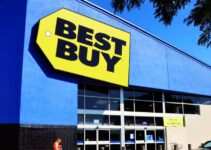IKEA is a Swedish furniture-manufacturing multinational conglomerate. Ingvar Kamprad founded the furniture company in 1943. Today, we’ll discuss the value chain analysis of IKEA; primary and supporting activities involved in the process of value chain analysis company example. They’re inbound and outbound logistics; operations, marketing and sales, and services; infrastructure, procurement, HRM, and technology as an application of value chain analysis.
Substitutes of IKEA
- Rooms to Go
- Argos
- Bob’s Discount
- Ashley Furniture Home Shop
- B&Q
- John Lewis
- Pier 1 Import
The value chain analysis of IKEA would analyze the primary and supporting activities of the process of value chain analysis application. Here’s the IKEA value chain analysis example company as follows;
Primary Activities of IKEA
Let’s discuss the primary and supporting activities involved in the process of value chain analysis of IKEA. It is an application of value chain analysis based on Porter’s model; some of the key elements and components of value chain analysis are as follows;
Inbound Logistics of IKEA
I-Sourcing & Procurement
The inbound logistical activities of IKEA begin with sourcing raw supplies and materials and procurement. According to an estimate, the company deals with more than 1220 suppliers and vendors in more than 55 countries across the globe. The brand sources roundabout 89% of the material from external and foreign suppliers. The top 5 countries where the company procures material are as follows;
- 5% from Sweden
- 6% from Germany
- 8% from Italy
- 18% from Poland
- 20% from China
II-Sourcing Key Area
Material and supply sourcing are the main inbound logistical activities of IKEA that add significant value to the company. The furniture brand has more than 31 trading service offices near the location of suppliers and they help the company to make sure following;
- Analyzing the quality of the product and raw supplies
- Negotiating the price
- Testing and experimenting with new ideas
- Evaluating productions processes
III-Economies of Scale & Self Servicing
The other inbound logistical factor of IKEA is offering low prices for its furniture through economies of scale. The company facilitates its customers with the flat packaging of furniture by allowing customers to assemble furniture by themselves. However, it decreases the transportation cost and makes it easier for them to move.
Outbound Logistics of IKEA
I-Distribution
The outbound logistical activities of IKEA comprise of warehousing and distribution to the company’s retail stores to meet the needs and demands of customers. The furniture brand has a network of more than 11 customer distribution centers and 28 warehouse distribution centers in more than 16 countries globally.
II-Transportation & Delivery
IKEA offers two types of types of delivery and transportation services to its customers. Parcel delivery is for the package weighing up to 25 kg and the company charges 12 dollars depending on the location of customers. However, truck delivery is for the package of more than 25 kg, and the company charges 50 dollars for the truck delivery.
Flat packaging is the main source of value creation in outbound logistics; it helps the company to save space. Other fuel-saving modes of transportation are available to the customers for some particular goods and products.
Operations of IKEA
I-Divisions
IKEA has segmented its business operations into three main divisions; franchise, property, and finance; franchise is the main area of the company. While running worldwide operations, IKEA implements the decentralized business model. Based on its decentralized strategic approach, the company allows its regional managers to make decisions independently based on consumer behavior patterns, culture, local, and markets.
II-Production & Manufacturing Units
IKEA has a network of more than 40 furniture production and manufacturing facilities worldwide, and most of them are in Europe. The furniture brand runs and manages its stores under the franchising agreement in over 30 countries globally. The company has 11 franchisee operating stores in over 50 markets; and 367 IKEA stores in 30 markets across the globe.
Marketing & Sales of IKEA
IKEA employs various types of sales and marketing approaches for the promotion of its products and services. Some of the marketing approaches are as follows;
- Online applications and websites
- Catalogs (stopped using catalog in 2022 due to decreasing sales)
- Integrated sales at stores
- Direct marketing
- Public relations
- Sales promotion
- TV and print media advertisement
Services of IKEA
Customer service is one of the main activities that the company adds value to its products. Some of the main services that the company offers are as follows;
- Replacement for the missing pieces at the local store
- Exchange of goods
- Refund
- Telephonic and online customer support
- Cost efficient products
Support Activities of IKEA
Let’s discuss the four supporting activities in the IKEA value chain analysis process, and they’re as follows;
Infrastructure of IKEA
Organizational structure and hierarchy are the success criteria. If a company has a better management and organized system, then it would perform better. Many companies publish analytical reports and point out the improvement areas based on this model. IKEA has a framework and structure comprising three divisions;
- Franchise
- Range and suppliers
- Regional service centers
Human Resources of IKEA
Skill, expertise, and working attitude of employees have a great impact on the company’s performance and the customers. The reason behind the success of IKEA is the high satisfaction level and efficiency of employees. The focus of the furniture brand is to recruit the most proficient employees and offer them training programs to reach their high potential.
Technological Development of IKEA
IKEA employs the latest technological tools and equipment to achieve cost efficiency and operational efficiency. The furniture brand employs digitalization methods for the right organizational processes. In fact, the company is utilizing data-driven technology and automating production and manufacturing processes. It allows the company to decrease the human errors.
Procurement of IKEA
Procurement supports the inbound logistical activity of the company by allowing it to gather and buy raw supplies from various suppliers. It is a secondary help to the procurement of raw supplies, and IKEA deals with more than 1220 suppliers across the world.
Conclusion: IKEA Value Chain Analysis Example Company | Application of Value Chain Analysis Process
After an in-depth study of the value chain analysis of IKEA; we have realized that IKEA is the world’s leading furniture brand. If you are learning about the IKEA value chain analysis, then you should keep in mind the abovementioned primary activities and support activities involved in the process of value chain analysis application. They’re inbound and outbound logistics, marketing, operations, and services; procurement, HRM, technology, and infrastructure.
Ahsan is an accomplished researcher and has a deep insight in worldly life affairs. He goes Live 3 days a week on various social media platforms. Other than research writing, he’s a very interesting person.


